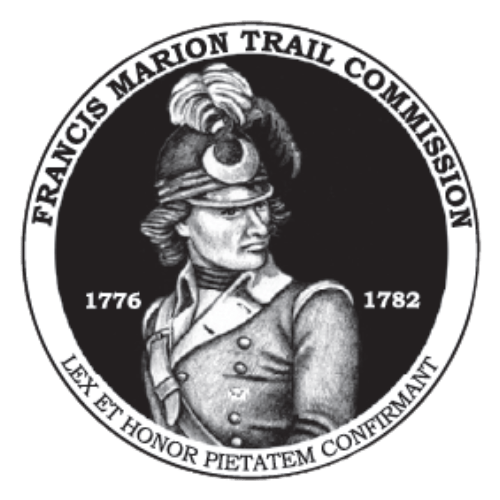BIOGRAPHY OF FRANCIS MARION
Francis Marion: The Swamp Fox of South Carolina
Early Life
Born in 1732 in St. John’s Parish, Berkeley County, South Carolina, Francis Marion was the sixth son of Gabriel and Ester Cordes Marion, French Huguenots. According to his friend Lt. Colonel Peter Horry, Marion was a frail infant—“no larger than a New England lobster.” When he was five, the family moved to a plantation near Winyah Bay in Prince George Parish. Little else is recorded about his childhood.
A Brief Life at Sea
At around 15, Marion set sail to the Caribbean, hoping the sea air would strengthen his health. The voyage ended in disaster. A whale rammed their ship, which sank on the return trip. Stranded at sea for days with no food or water, the crew survived under dire conditions before reaching land. The ordeal ended Marion’s interest in maritime life.
Farming and Early Military Service
After returning home, Marion took up farming and helped support his family. In 1750, following his father’s death, he cared for his mother and continued farming with his brothers.
In 1756, during the French and Indian War and subsequent Cherokee War, Marion and his brother Gabriel joined the militia. A notable early mission saw Marion survive a deadly Cherokee ambush, earning him a reputation for bravery and leadership.
The Revolutionary War Begins
By 1773, Marion had purchased Pond’s Bluff Plantation along the Santee River. With tensions rising between Britain and the colonies, he was elected to South Carolina’s Provincial Congress and later appointed captain of the Second Regiment. He and his brother Gabriel rallied 60 men to the cause.
Marion’s first military assignment was protecting critical supplies in Dorchester, followed by fort construction at Sullivan’s Island. Promoted to major, then lieutenant colonel, he displayed courage and integrity in every duty.
At the Battle of Fort Sullivan, he commanded heavy cannons on the fort’s left flank. As the British fled, he famously asked for—and received—permission to fire one final shot.
Guerilla Warfare and the Rise of the Swamp Fox
After an ankle injury kept him from the fall of Charleston, Marion returned to the fight, leading daring raids against British forces. In August 1780, under General Gates’ orders, he disrupted British supply lines along the Santee and rescued 150 Continental soldiers at Fort Motte.
His surprise attacks and rapid retreats into the swamps frustrated the British. Lt. Colonel Banastre Tarleton, unable to catch him, dubbed him the “Swamp Fox”—a name that stuck.
Key Battles and Leadership
Marion fought in over a dozen battles and skirmishes across South Carolina, including:
-
Blue Savannah
-
Black Mingo Creek
-
Tearcoat Swamp
-
Battle of Eutaw Springs – commanding his largest militia force, earning praise from Major General Nathaniel Greene and Congress.
Marion was a master of guerilla tactics, often striking quickly before vanishing into the swamps. His methods would later influence modern warfare.
Statesman and Patriot
In addition to his battlefield heroics, Marion served in the South Carolina Provincial Congress and was elected to the state senate in 1781. A disciplined, devout leader, he was admired by his men for his fairness and humility. He insisted his officers uphold high standards, and he never asked of his soldiers what he wouldn’t do himself.
Final Years and Legacy
After the war, Marion returned to a burned and ruined Pond’s Bluff. He rebuilt his life and married Mary Esther Videau in 1786. He remained there until his death on February 27, 1795, at the age of 63.
Francis Marion’s innovative tactics, moral integrity, and unwavering patriotism made him one of the most influential figures of the American Revolution. His gravestone honors his life with the words:
“History will record his worth, and rising generations embalm his memory, as one of the most distinguished Patriots and Heroes of the American Revolution…”


